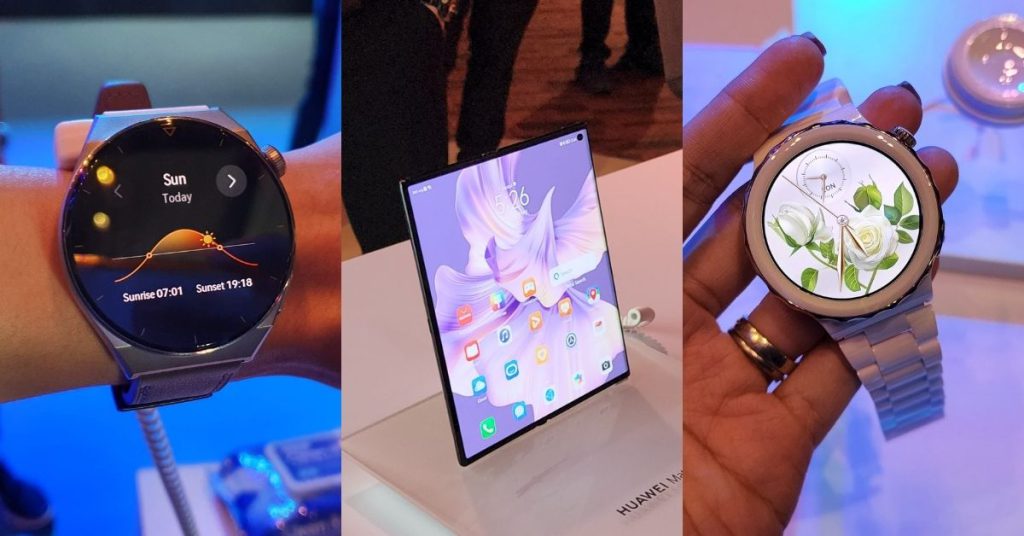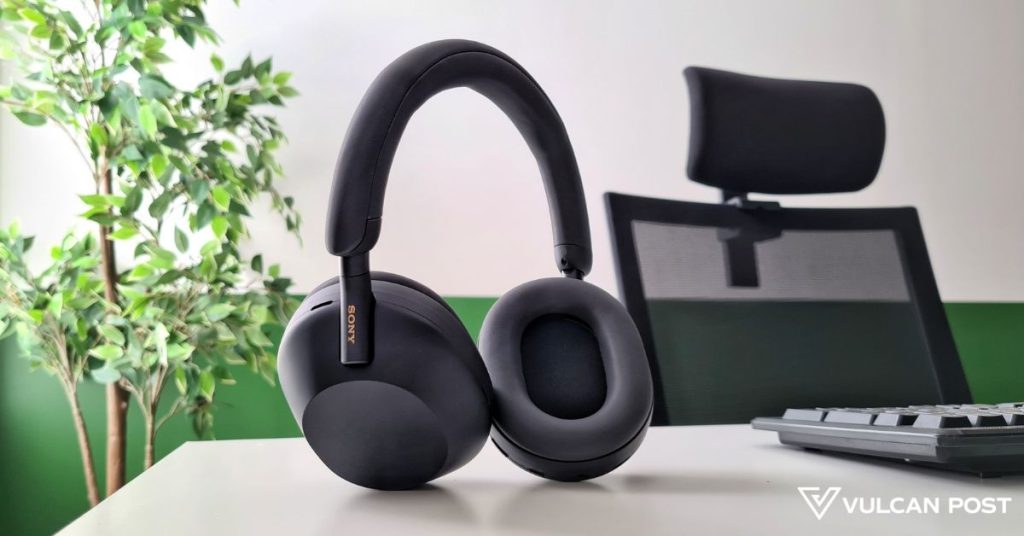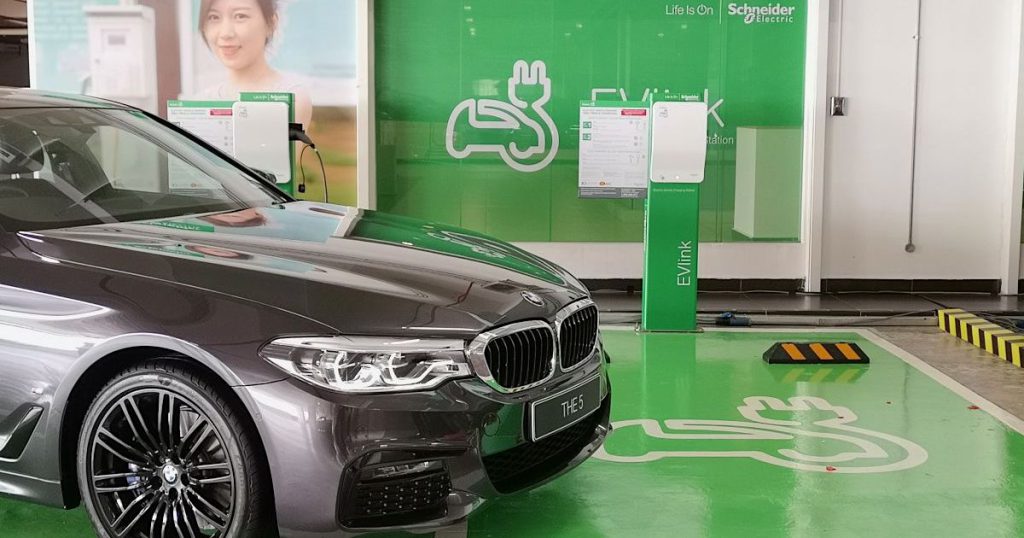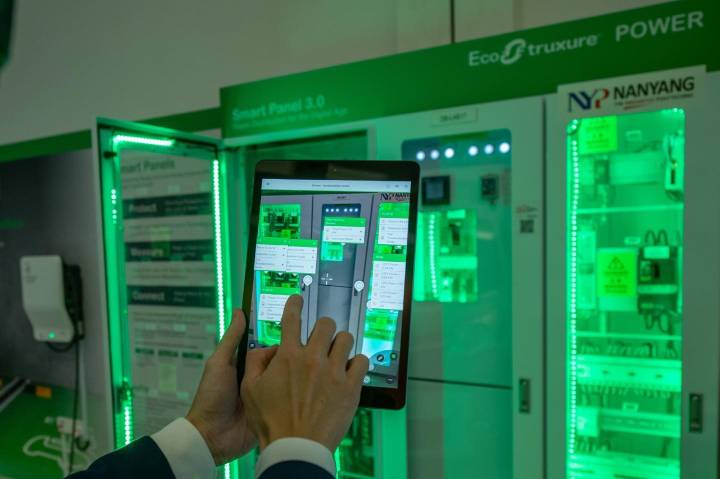Ceramic watch & RM7,999 foldable aside, here’s what else dropped at Huawei’s 2022 launch

Recently, Huawei launched several smartphones in Malaysia, including the Mate Xs 2, P50, and the nova Y70. On top of that, they also released several smart wearable devices like the Watch GT 3 Pro, Watch Fit 2, Watch Kids 4 Pro, and the Huawei Band 7.
After attending the event and getting brief hands-on sessions with several of these products, here are some specs highlights and key features.
Huawei Mate Xs 2

| Chipset | Qualcomm Snapdragon 888 |
| Memory & storage | 8GB RAM, 512GB internal storage |
| Display | 7.8-inch, OLED 2200 x 2480 True-Chroma Foldable, 120Hz display (6.5-inch display with 2480 x 1176 when folded) |
| Camera | Triple-camera setup with 50MP wide, 8MP telephoto, 13MP ultra-wide camera, 10.7MP selfie camera |
| Battery | 4600mAh internal battery, which supports 66W Huawei SuperCharge, claimed to be able to charge up to 90% battery in just 30 minutes |
| Weight | 255g |
| Colour variants | Black, White |
The Huawei Mate Xs 2 comes with a foldable 6.5-inch display which can be unfolded to a 7.8-inch display. The phone is also lighter at 255g, unlike its predecessor two years ago, which weighed 300g.
At the price of RM7,999, the phone is also much cheaper than its predecessor, which was priced at RM11,111. From my brief experience, I could already tell this was a powerful phone, and its size makes it ideal for those who want productivity on the go without lugging around a tablet or laptop.
Those who pre-order the phone from June 3 to 23, 2022, from either Huawei’s Experience stores, Lazada, or Shopee will be eligible for gifts worth up to RM1,400, like the Huawei Watch GT 2 Pro.
Huawei P50

| Chipset | Qualcomm Snapdragon 888 |
| Memory & Storage | 8GB RAM, 256GB internal memory |
| Display | 6.5-inch, 1224 x 2700 pixel, 90Hz display |
| Camera | Triple-camera setup with 50MP wide, 12MP telephoto, 13MP ultra-wide camera, 13MP selfie camera |
| Battery | 4100mAh battery which supports 66W Huawei SuperCharge |
| Weight | 181g |
| Colour variants | Cocoa Gold, Golden Black |
Almost five months after the release of the P50 Pro and the P50 Pocket, Huawei has finally introduced the Huawei P50 into the Malaysian market, which can be pre-ordered from today onwards at the price of RM2,999 from their official website, Lazada, and Shopee.
Customers who pre-order the phone before May 27, 2022, can get a number of freebies worth up to RM1,000, like the FreeBuds Lipstick.
On another note, the P50 Pro is now available for pre-order in several new colourways, including the Golden Black, Cocoa Gold, and Silver Blue, at a lower price of RM3,699.
Huawei nova Y70

| Chipset | Not revealed during the launch |
| Memory & Storage | 4GB RAM, 128GB internal storage |
| Display | 6.75-inch, 1600 x 720 pixel display |
| Camera | Triple-camera setup with 48MP main, 5MP ultra-wide, 2MP depth camera, 8MP front-facing selfie camera |
| Battery | 6000mAh battery, supports 22.5W SuperCharge technology |
| Colour variants | Midnight Black, Pearl White, Crystal Blue |
The most affordable smartphone of the bunch, the Huawei nova Y70, is also available starting from June, 2022 onwards on Lazada and Shopee.
Huawei Watch GT 3 Pro

| Display | 1.43-inch AMOLED display with Sapphire glass (1.32-inch AMOLED display for the Ceramic Edition) |
| Battery | Up to 2 weeks |
| Features | TruSeen 5.0+: Heart rate and SpO2 monitoring, sleep tracking, 100+ workout modes, compatible with 60+ workout apps, Dual-Band- Five-System GNSS positioning |
Onto our first wearable, the Huawei GT 3 Pro is available in two flavours, namely the Watch GT 3 Pro Titanium Edition and the Watch GT 3 Pro Ceramic edition.
The first of the two comes with a larger 1.43-inch AMOLED display and a grey leather strap. The Ceramic edition, on the other hand, has a smaller display, but a more premium and elegant looking design with an all-white exterior.

Both the editions are not only rated for IP68 water and dust resistance, but they’re also able to withstand water depths of up to 30 metres, unlike the Watch GT 2, which was rated for 5 ATM only.
The Titanium and Ceramic versions can be pre-ordered from today until May 26, 2022, from RM1,399 and RM2,399, respectively. The pre-order freebies include a Huawei Band 6 and a Huawei FreeBuds Lipstick, depending on which edition you get.
Huawei Watch Fit 2
| Display | 1.74-inch AMOLED display |
| Features | Heart rate and SpO2 monitoring, all-day stress tracking, animated fitness coach |
| Colour variants | Isle Blue, Midnight Black, Sakura Pink, Moon White |
Huawei also released the Watch Fit 2, a follow-up to the original Watch Fit released in 2020. Besides supporting more than 97 workout modes, it also comes with an animated fitness coach that offers training regimes across seven workout courses.
Two editions are being offered. The first of which is the Watch Fit 2 Active Edition, available from May 27, 2022, in Isle Blue, Midnight Black, and Sakura Pink, at the price of RM599. The second is called the Elegant Edition (Moon White colour), which will be available from July 2022 onwards for RM699.
Huawei Watch Kids 4 Pro
- 5MP front-facing camera that supports HD video calls
- Combines nine positioning technologies for accurate location tracking
- Available in Blue and Pink
Huawei also offers the Watch Kids 4 Pro smartwatch for children with various tracking and video calling functionalities. Priced at RM699, they’re available for purchase from May 27, 2022.
Huawei Band 7
- All-day fitness tracker
- Available in Graphite Black, Nebula Pink, Wilderness Green, and Flame Red
Last but not least, there’s the Huawei Band 7 at RM219, which is available from July 2022 onwards.
-//-
Overall, it was nice to see that the price of the Huawei Mate Xs 2 lowered by a significant amount compared to the predecessor two years ago, but it is still undoubtedly a high price for many to pay. It’s likely that its main customers will be made up of early adopters, tech enthusiasts, or serious Huawei fans.
Their new wearables are also quite attractive, especially the Huawei GT 3 Pro Ceramic edition, which is both eye-catching and functional. Surprisingly, the fact that there’s even a Huawei Watch Kids 4 Pro implies that the previous models sold well enough for the brand to continue making them.
These were my immediate thoughts over the launch, but we’re aiming to get our hands on some units for full reviews soon.
Also Read: Sidec’s accelerator has helped 120 startups, here’s how you can get a share of RM50k funding
Zilingo CEO fired “on grounds of insubordination” following initial suspension

Ankiti Bose, co-founder of Singapore-based start-up Zilingo, has been fired today (May 20) from her post as the Chief Executive Officer (CEO).
This comes after Bose’s suspension on March 31, following accusations of accounting malpractice.
She has since denied any wrongdoing, and called the suspension a “witch hunt”. In a separate statement to Bloomberg News, she stated that the firing was on grounds of insubordination.
In response, Zilingo said that the termination of employment was with cause, and they reserved the right to pursue appropriate legal action.
Deepening crisis for Zilingo
Bose’s suspension first occurred after auditors raised the alarm on the company’s accounting practices, as part of a due-diligence process for a new funding round with Goldman Sachs.
Financial discrepancies, such as the fact that Zilingo has not submitted an annual financial report since 2019, were highlighted.
An investigation, led by investors Temasek Holdings and Sequoia Capital India, is also close to being finalised.
Bose asserted that the investigations and suspension were triggered by her complaints of harassment against an unnamed investor, adding that her practices and decisions were well-known by senior managers and directors.
Bose’s firing also comes a week after Zilingo’s creditors recalled their loan, and Zilingo has since appointed a financial advisor despite Bose’s offer to pay off the debt.
Prior to this, Zilingo has been named as one of Singapore’s high-profile startups, which raised US$226 million at a valuation of US$970 million in 2019.
The aforementioned talks of further funding with Goldman Sachs would have made Zilingo a unicorn, but the talks have since broken down.
Featured Image Credit: Mint
Also Read: Zilingo CEO suspended for alleged accounting malpractice – denies charges, calls it a “witch hunt”
This S’porean sold 10,000 beancurd skin snacks at launch and expanded globally within 5 months

Growing up, Collin She’s mother would often fry beancurd skin and fishballs as snacks for the family.
However, having left the nest for university, Collin would often miss his mother’s cooking and the childhood snack that reminded him so much of home.
Alongside the fond childhood memories, Collin, who often travelled around Japan, discovered that Singapore did not have the same variety of snacks that are readily available to consumers.
Without any prior business experience — he was previously a steward for Singapore Airlines, before moving on to be an oil and gas trader — he set out to create a snack that is inexpensive, nostalgic and most importantly, “uniquely Singapore”.
Inspired by his own childhood snack, he wanted to turn beancurd skin to an actual snack.
Being an extremely versatile ingredient, beancurd skin is used in many of Asian dishes like yong tau foo, dim sum and inari. He wants to take this traditional ingredient and give it a modern twist so that people of all ages can enjoy it.
“We want to bring centrestage this widely-loved ingredient that has always been on the sidelines,” expressed Collin.
The first beancurd skin snack in the world
Launched in January 2020, Fupi is touted to be first of its kind in the world.
According to Collin, their snacks are much healthier, lighter and not oily compared to other fried snacks such as potato chips and fish skins.

Fupi was first launched at a Chinese New Year fair at Vivo City mall, where the brand managed to sell 10,000 packets.
Additionally, Fupi launched a festive gift box at launch, which also turned out to be a hit, seeing that it sold 150 boxes within the first week.
The demand for their snacks was so overwhelming that Collin had to resort to borrowing a friend’s car and drive up to Malacca to retrieve more stock.
However, a key business challenge that they face is the lack of efficiency in processing orders from consumers as many of the factory’s processes are still manual. This limits the number of orders the brand is able to produce in a day, hence Fupi plans to invest in the necessary machines to ramp up production.
When mapping out their startup idea, Collin first took a look at both the supply and demand factors.
“We needed distributors and exporters who understood our brand and product to bring Fupi beyond the shores of Singapore,” said Collin.
In terms of supply, the brand had to ensure efficiencies so as to deliver the best quality snack to consumers. This included sourcing for the factory, ingredients, packaging and warehouse, as well as finding a workforce with appropriate skillsets, and ensuring supply chains are reliable and robust.
In terms of demand, the top priority was marketing and raising brand awareness through social media platforms, collaborations, organisations and pop-up stores.
“We worked tirelessly for the first couple of months to perfect the taste and texture of Fupi, set up our production line and spoke to distributors to onboard Fupi,” said Collin.
He added that the early days weren’t easy and he was grateful to have his parents lend a helping hand to kickstart the business. They helped oversee the operations and production in Malacca, Malaysia, while Collin single-handedly managed sales and marketing in Singapore.
Having invested S$100,000 to start up Fupi, Collin shared that they took only a year to break even.
They strive to create new flavours every year
Fupi’s flavours are inspired by Singaporean staples, and Fupi endeavours to create new flavours every year to attract more people to enjoy their snack.
Some of Fupi’s signature flavours include Sichuan Mala, Hot Pot Tomato and Nyonya Laksa (developed in collaboration with Singapore Food Festival), and most recently, it launched two other new flavours: Thai Green Curry and Seaweed Wasabi.

When the brand first launched, consumers gravitated towards Sichuan Mala but over the last year, Hot Pot Tomato has become the brand’s best-selling product.
According to Collin, the Research & Development (R&D) process of creating a new flavour typically takes between eight and 10 months from conception to production.
The process includes creating and adjusting the recipe as well as conducting a “taste test” with at least 50 people to gather their feedback. Once the focus group is satisfied with the flavour, only then will it be taken for production.
He added that not all flavours make the cut. For instance, they have experimented with creating a “sweet” version of Fupi, particularly chocolate flavour, but it did not taste as good as they had hoped.

Apart from launching new flavours and products (beancurd sticks), Fupi has been busy tweaking its existing flavours to achieve the utmost perfection.
“We have made Fupi less oily and crispier as compared to when we first launched Fupi in January 2020,” explained Collin.
Covid-19 is a mixed bag of opportunities and challenges
Covid-19 presented its own set of opportunities and challenges for Fupi.
With Covid-19 restrictions, many people were encouraged to stay at home. This led to a significant increase in online shopping and snacking, which ultimately caused their online sales and revenue to also increase.

At the height of Covid-19 in 2020, the brand managed to sell an average of 10,000 packets a month. Even during the circuit breaker, its sales volume soared to 16,000 packets a month.
On the flipside, the Covid-19 restrictions affected its production manpower, which gave rise to supply chain issues. It also led to a host of other issues such as an increase in raw material costs, longer delivery times, and lower rates of production.
Despite these challenges, within just five months of launching Fupi, the brand has boldly expanded its outreach to United States.
“Since we started exporting to the United States, Canada and New Zealand, our sales volume has doubled,” shared Collin.
He added that they are also in the midst of expanding their exports to include other countries such as Dubai and Australia, and has no plans to set up a physical store for now.
Ultimately, his goal is to shape Fupi into a global household brand name and snack. To achieve this, Fupi will continue to innovate and evolve with consumers’ needs, offering the best snacking experiences for consumers.
Staying true to his mantra of harnessing creativity to challenge the status quo, he sets out to be innovative without being “gimmicky” or “kitschy”.
“I started Fupi to bring families and friends together with a nostalgic snack and (that remains) our main goal today,” summed up Collin.
Support homegrown brands and shop Fupi now on VP Label:
[iframe_vp_product src="https://vulcanpost.com/label/embed-all/embed-fupi/" id="iframe1"]
Featured Image Credit: Fupi
Also Read: Mask acne now a common woe, which helped this S’pore skincare startup see 300% sales increase
My first three hours with Sony’s WH-1000XM5 headphones: comfy, bassy, great ANC

Out of its sleek new case design (that some have pointed out is reminiscent of the Bose 700’s case), the Sony WH-1000XM5 looks cushy and premium, and weighs 250g.
Soft, vegan leather coats the cups—which feel more airy than spongy—and headband, making for a very comfortable fit. This is a win for those who plan to use the headphones for long virtual meetings/calls or for travel.

To get a feel for the headphones for this first impressions piece, I used the WH-1000XM5 for three hours straight. Despite being stuck to my head throughout, not once did I feel they built up or trapped heat around my ears, so I didn’t experience any sweating.
Note that they have no official IP rating, so it’s recommended you don’t get too sweaty in these, or use them in wet weather.
Instead of a notched track, there’s a smooth friction rod design to adjust the band sizing for your ideal fit.

I suspect my head runs a bit on the smaller side, because even with the band at its smallest, I didn’t feel like I had a good “seal”, and the WH-1000XM5 were prone to shifting around whenever I moved my head too much.
On the flip side, the cups have padding that’s wide and deep enough to accommodate those with larger ears.

Sony have proven themselves time and time again to be experts at audio, albeit some might argue favouring bass a little too much.
I’m all about that bass, so I actually used the Sony Headphones app to set the equaliser to Bass Boost, then sat back and enjoyed my music.
The audio is crisp and carries depth, and the amazing listening experience was honestly why I kept it on for three hours straight in the first place. I just couldn’t get enough.
What would’ve made it even better was if I could actually utilise Sony’s 360 Reality Audio, which claims to enable an audio immersion experience that’s as real as a live performance.
Unfortunately, this feature is only supported by rather niche music streaming apps (in this region) like 360 by Deezer, TIDAL, Artist, and nugs.net.
Spotify isn’t on the list, but I’m hoping someday it could be. The lack of Apple Music support is understandable since the WH-1000XM5 is a competitor to the AirPods Max.
Audio aside, the ambient noise cancellation (ANC) on the WH-1000XM5 was nice and balanced to me (I’ve tried others that made it feel like my brain was leaking out my ears), but might take a bit of getting used to for those new to the feature.
With ANC activated and your music playing or call going on, the majority of outside noise is drowned out, save for really loud or sharp ones.
I’d recommend downloading the Sony Headphones app for maximum functionality too, as it’s where you can toggle between noise-cancelling, 20 adjustable levels of ambient sound, and a neutral setting.
The convenient Speak-to-Chat feature can also be toggled and refined in the app. Though, if you’re someone who enjoys humming along to your music, maybe you’d prefer to leave it off and utilise the WH-1000XM5’s ambient sound passthrough by cupping your hand over the right cup instead.
Other controls such as pause/play, skip forward/backward, voice assistant (requires setting up), and volume up/down are done with the capacitive touch panel on the right ear cup too. One of my favourite features though has to be the auto-pause/play when you take off/put on the headphones.

With four beamforming microphones, I actually expected the WH-1000XM5 to have great call quality, but they fell short.
I got my colleague to try using the headphones in a call with me so I could hear for myself what the mic pickup was like. The noise suppression worked great, even with him purposely clapping his hands and knocking on his table loudly.
But the clarity of his own voice felt lacking, as if slightly distant from the mic. It’s enough to get you heard and understood through most calls, but personally, I’d pick the Jabra Evolve2 75 if call clarity is your priority, since it has a microphone boom arm that can be lowered.
The battery life on these Sony headphones is said to be amazing, able to offer up to 30 hours of battery life on a single full charge, while a quick three-minute charge is enough to give you three hours of use.

Over the three hours of my non-stop usage, its battery only dropped by about 20% with ANC activated throughout.
One thing that frequent travellers might find issue with regarding this RM1,799 unit though, is that unlike its predecessor, the WH-1000XM4, the WH-1000XM5 cannot be folded into itself, leading to a slightly larger and bulkier casing.

Whether or not that’s a worthy trade-off for a great pair of headphones is up to individual preferences. It would be worth it for me, as my short time with the WH-1000XM5 has proven them to be solid, premium headphones, excelling in comfort and audio, with my only gripe being the call mic quality.
This is just a first impressions though, so between this and my full review of the headphones soon, there’s room for my mind to change.
Also Read: 6 reasons why this LG 4K Smart OLED TV can be a conversation starter in your living room
Malaysian sellers, here’s what you need to know before selling your products on Amazon.com

[This is a sponsored article with Amazon Global Selling.]
Previously, we interviewed a few local Amazon sellers to get insights into their strategies for selling products globally.
But one key question still remains for many: how exactly do you proceed with starting an international ecommerce business on Amazon.com?
How do I start selling on Amazon.com?
As with any business, the first thing you need to determine is what products you want to sell on Amazon.com. One way to gauge this is by having a look at the products on the Amazon Best Seller list and analysing what products customers are likely looking for.
If the product that you plan to sell is already available on Amazon.com, you can consider selling an alternative product at a more competitive price point. You can also have a look at the reviews of each of the products listed to take note of their drawbacks and strong points.
After identifying potential products, the next step is to create an Amazon account. Have your bank account number, chargeable credit card, NRIC, tax information and phone number ready for a smooth registration process.
Other than that, you can take advantage of Amazon’s Service Provider Network to find service providers to aid in several aspects when selling on the ecommerce platform such as product compliance, taxes, payment, marketing, advertisement, and more.
For those who have yet to venture into ecommerce, they have a comprehensive guide on how to get started on selling on Amazon.com and more.
What benefits can help me kickstart my business?
Amazon started the New Seller Incentives programme where brand owners that register themselves on the Amazon Brand Registry will be eligible for up to US$50,000 in benefits which include, but are not limited to the following:
- 5% back on your first US$1 million in branded sales for brand owners
- US$200 credit for Sponsored Product Ads
- 90 days of free storage for 50 units
- 180 days of free removals with Fulfillment by Amazon (FBA)
On top of the benefits mentioned above, you will have access to tools to help your business grow, such as ads, multi-page stores, and brand analytics.
Another support that new sellers can get is from MATRADE’s (Malaysia External Trade Development Corporation) eTRADE Programme 2.0 which assists new local SMEs by providing incentives of up to RM20,000, along with digital marketing and training.

There’s also the FBA New Selection programme where eligible sellers can get free limited monthly storage, free removals, and more.
What are the costs of selling on Amazon.com?
You need to first determine whether you need an Individual or a Professional subscription plan.
To elaborate, an individual subscription plan will not have access to many of the advanced selling and analytic tools Amazon offers. In addition to that, the fee is US$0.99 for every item sold.
With the Professional subscription plan, you’ll be charged a flat fee of US$39.99 (before taxes) a month instead. You will also have access to advanced selling tools to analyse sales performance, 90-day support from Amazon themselves, and the option to sell products in restricted categories like art, animal-related products, and more.
With that in mind, the Professional plan provides much better value in the long run and access to on-site advertising tools to help grow your business.
Depending on the item sold, there are also additional selling fees, which include referral fees, and the variable closing fees.
Businesses must consider the fulfilment fees as well. If you do the fulfilment yourself, you are required to pay a seller’s fulfilment price that could start from US$3.99. Another option is by using FBA, which lets you stock up in one of 175+ fulfilment centres around the globe.
The benefit of using the service is that as soon as a buyer purchases your product, Amazon will handle the packaging and shipment to ensure that it reaches its destination. By doing so, not only do the customers get the products much faster, but it frees up the seller’s time to focus on improving their business.
FBA also helps with refunds, customer inquiries, and product returns without you needing to lift a finger. All returned products can be consolidated and sent back to you or disposed of, which can help save on expenditure.
The cost for each product sold can start from as low as US$2.92 a unit plus an additional 5% for fuel and inflation surcharge.
However, keep in mind that there are additional fees to take note of as well, such as the storage fee, removal order fee, long-term storage, and more, which take into account the average volume of the inventory.
I still need more information, where can I find it?

For those who want more in-depth explanations about selling on Amazon.com, their official website has plenty of resources for you to take advantage of when starting an international ecommerce business.
You could even speak to their seller ambassadors to get first-hand advice from the community. If you have a question that’s a lot more specific, Amazon has an official Facebook page where your questions will be addressed directly.
They also frequently run live webinars that provide valuable information for up and coming Amazon sellers to stay informed. This includes the upcoming webinar with Sidec on how to expand your business to the US on May 26, 2022, from 10AM to 11AM.
- Find out more information about how to sell on Amazon.com here.
- Read our Amazon seller interviews here.
Featured Image Credit: Vecteezy
As S’pore pushes for EVs, Schneider Electric stresses the importance of EV infrastructure

As Singapore transitions towards carbon neutrality, the government has been actively trying to get road users to transition towards electric vehicles (EVs). These vehicles run on cleaner energy, and many companies have been eager to aid Singapore in this transition.
While companies like Tesla, BMW, Chevrolet, Nissan and other automobile companies actively research, develop, and produce better EVs, there are also other companies that are helping Singapore’s transition towards electrification in other ways.
For Schneider Electric — a global specialist in energy management and automation that came to Singapore in 1973 — it strongly feels that the transition towards EV adoption can be greatly helped by improving Singapore’s EV infrastructure.
Why is EV infrastructure so important?
While it certainly is true that the quality of EVs themselves do matter, EV quality is not the be-all and end-all of EV transition. Other factors do play a part as well, and EV infrastructure is among them.
The government has recognised this fact, and has been implementing measures to ensure that EV infrastructure does not fall behind EV adoption.
As part of the Singapore Green Plan 2030, new residential areas will have EV charging stations, while rebates and incentives are being offered to private developers to install EV chargers within their estates.

Adrian Duque, Asia Pacific Business Development Manager- eMobility at Schneider Electric, notes that the electrification of transportation is critical in the journey to decarbonisation.
Purchasing the EVs is an easy first step, while building and scaling up charging infrastructure is often cited as the biggest challenge faced by EV fleet operators.
Moreover, the EV ecosystem is “complex and fragmented”. It is made up of multiple players including utility companies, fleet operators, government regulators, infrastructure providers and car manufacturers.
As such, Schneider’s focus is on accommodating larger numbers of EVs on the roads, and enabling anyone who wants to own an EV to have seamless access to charging stations.
As more consumers shift from an Internal Combustion Engine (ICE) vehicle to EV, it is crucial for both the public and private sectors to provide supporting battery charging infrastructure. We will begin to see a shift in car owners’ behavioural patterns – EV car owners will charge when the car is in stop mode.
Where do people stop? At homes, at work, at commercial and industrial places are rest places. These are where charging will likely take place, so it is critical that the charging infrastructure is built in these areas. This behaviour is very different to the traditional way of going to gas stations to fill up an ICE vehicle.
– Adrian Duque, Asia Pacific Business Development Manager- eMobility at Schneider Electric
What is Schneider bringing to the table?

Schneider began its history in 1836 as a steel and machinery company, before eventually pivoting into the electricity market in 1891.
It eventually completely withdrew from the steel industry to focus on electricity in the 1980s and 1990s. Since then, they have acquired and developed their own technology, with a focus on smart grids, building automation, and now, EV infrastructure.
For starters, Schneider is taking the first step towards improving EV infrastructure in Singapore by offering what might be considered the ‘bread and butter’ of any EV infrastructure system: EV chargers (both AC chargers and DC fast chargers).
While EV infrastructure may simply mean EV chargers and charging stations to some, Schneider goes a step further and offers what they term as “end-to-end eMobility solutions”. These include the power distribution equipment needed to power EV chargers, software integrations for EV chargers, load management systems and more.
We believe that digital technologies are key to integrating the whole eMobility ecosystem. This goes beyond charging stations and includes smart interconnection with the grid, the buildings, the infrastructure, the drivers and the renewable energy sources and microgrids to secure power availability and cost efficiencies.
– Adrian Duque, Asia Pacific Business Development Manager- eMobility at Schneider Electric
For example, Schneider produces the Schneider EVlink Wallbox — a charger that can be used for charging at home, on the street, and at workplaces. While the Wallbox itself looks ordinary, its settings can be changed by users to allow for different power output levels.

This enables owners to control how much and how fast they want to charge their EVs, and take better care of their vehicles whilst reducing electricity usage.
Essentially, Schneider takes a holistic approach when it comes to Singapore’s transition to cleaner transportation. Instead of simply pushing for EVs, Schneider aims to ensure that EV users can actually make proper use of their EVs, and anyone who needs to manage charging points and charging stations are equipped with what they need to oversee EV charging.
Using analytics and edge control, a smart infrastructure can facilitate communication between grid, buildings, city and drivers, enabling the intelligent consumption of energy, reducing power congestion, increasing resiliency, and improving cost efficiency.
An intelligent charging station equipped with analytic platforms can prevent consumers from hogging a charging lot. Load Management for Smart Charging & Optimisation of energy usage must be taken into consideration so that more charging points can be managed where there is limited power source in an existing building.
– Adrian Duque, Asia Pacific Business Development Manager- eMobility at Schneider Electric
Moving towards a carbon neutral future
As EVs improve, Schneider has been stepping up their own initiatives as well — they have collaborated with Nanyang Polytechnic to showcase the potential of green technologies in the workplace, and are training students via workshops to manage energy consumption for EV charging.

Lest we think that they are done, they are also working on improvements to their own offerings and technology.
Currently, Schneider is looking at creating new AC chargers for residential, commercial, and industrial applications, as well as new DC chargers for high-power charging. They are also working on new software to manage EV charging infrastructure and user management.
“Over the next decade, our energy and transportation systems will be reshaped towards a greener net-zero future. At Schneider Electric, we are continuously exploring innovative solutions to create an efficient, resilient, sustainable, and future-ready EV ecosystem,” said Duque.
Featured Image Credit: PaulTan.org
Also Read: US vs China vs Europe: What can S’pore learn from the EV policies in other countries?
The M’sian NFT scene goes ape with hosting in-person events this May, save these dates

It can be said that the massive spike in artists getting into NFTs last year could be due to the lockdowns and event restrictions. NFTs functioned as a way for them to showcase their art to a global audience, with the potential of making a sale from their works.
Now that there are no more restrictions on hosting events or exhibitions, it seems that Malaysians are taking full advantage of it with the injection of NFTs into the mix. Here’s what’s going on.
From May 21-27, an NFT art exhibit from well-known names
In the NFT world, the love for ape-inspired projects isn’t slowing down.
Malaya Ape Club (M.A.C.), will have an upcoming event going on at Lot 10 from May 21 to 27. It will be the team’s first NFT art exhibition featuring artworks from some well-known names in the NFT community and the world including 8sian, Bored Ape Yacht Club, and Pestle & Mortar, to name a few.
According to the M.A.C. website, it is believed that this event is meant to foster collaborations between artists and brands to create merchandise.
The M.A.C. team appears to be made up of a content creator, a Stoned & Co founder, a furniture designer, a self-taught DJ, and more. All of their social media handles can be found on the website for audiences to learn about (let’s be real: stalk) them.
M.A.C. has also stated on its website that it intends to build a brand that connects the physical and digital worlds (phygital). This is in hopes of making an impact in commerce and culture on Web3. With T-shirt brands Stoned & Co as well as Pestle & Mortar on board for the upcoming event, it’s clear that there is opportunity for merchandising this way.
To reach their vision of being fully decentralised by 2032, the M.A.C. team are working on building a community of supporters for their project. They will continuously host exhibitions and festivals, while releasing merchandise and collectables for the community.
M.A.C. has also teased that there may be an upcoming music festival at the largest motorsport race track in Malaysia.
From now to June 10, an abstract exhibit featuring physical & NFT art
Michelle Yap, a local fine artist, has been using her time in lockdown to create abstract artworks and work with a reputable gallery to organise an exhibition.
She teamed up with a few parties including Qing Gallery’s founder, and Robb Report Malaysia’s editorial director to launch an exhibition named “Believe in Time – An Artshow by Qing Gallery”. It’s a month-long showcase being held at Desa Park City @ The Waterfront, in Kepong until June 10.

Michelle will be displaying a collection of 13 terracotta artworks, 11 sculptures, and three NFTs.
Previously, Michelle has been known for her other art exhibitions in Paris, Germany and London, Singapore, South Korea, Dubai, Brazil, Shanghai, and Tokyo.
Physical exhibits aside, a Malaysian-made NFT marketplace that we’ve spoken about a few times before has officially gone live.
Making it official
Remember NFTapir (pronounced NF-Tapir)?
Its founder, Zang Tan, has reached out to Vulcan Post to announce that the marketplace has officially gone live after being operational but still under development for a while.

NFTapir is meant to bring fine artists into the digital world, aiming to appeal to experienced contemporary artists who believe their artworks should be valued higher.
Thus, artists can mint a digital copy of their physical art pieces on the site, and buyers can purchase its NFT. They are allowed to set a floor price of around 250 USDT or about RM1,099 (at the time of writing).
Currently, there are over 100 fine artworks on the site, though not many pieces have been transacted yet.
Next on our agenda:
We’ve heard stories where an NFT artist makes it big and sold their works for millions of Ringgit, which has likely inspired some artists to join the NFT realm.
But in order to make a living from NFTs, does one have to make it their full-time job? We will be speaking to some creators in the scene to get their stances and insights on this topic, so stay tuned for that next week.
- If you’ve got something NFT-related to share that’s both exciting and locally-relevant, hit us up with your story at malaysia.team@vulcanpost.com.
- Read more of our NFT content here.
Also Read: 6 reasons why this LG 4K Smart OLED TV can be a conversation starter in your living room
Featured Image Credit: Malaya Ape Club, Qing Gallery, NFTapir

